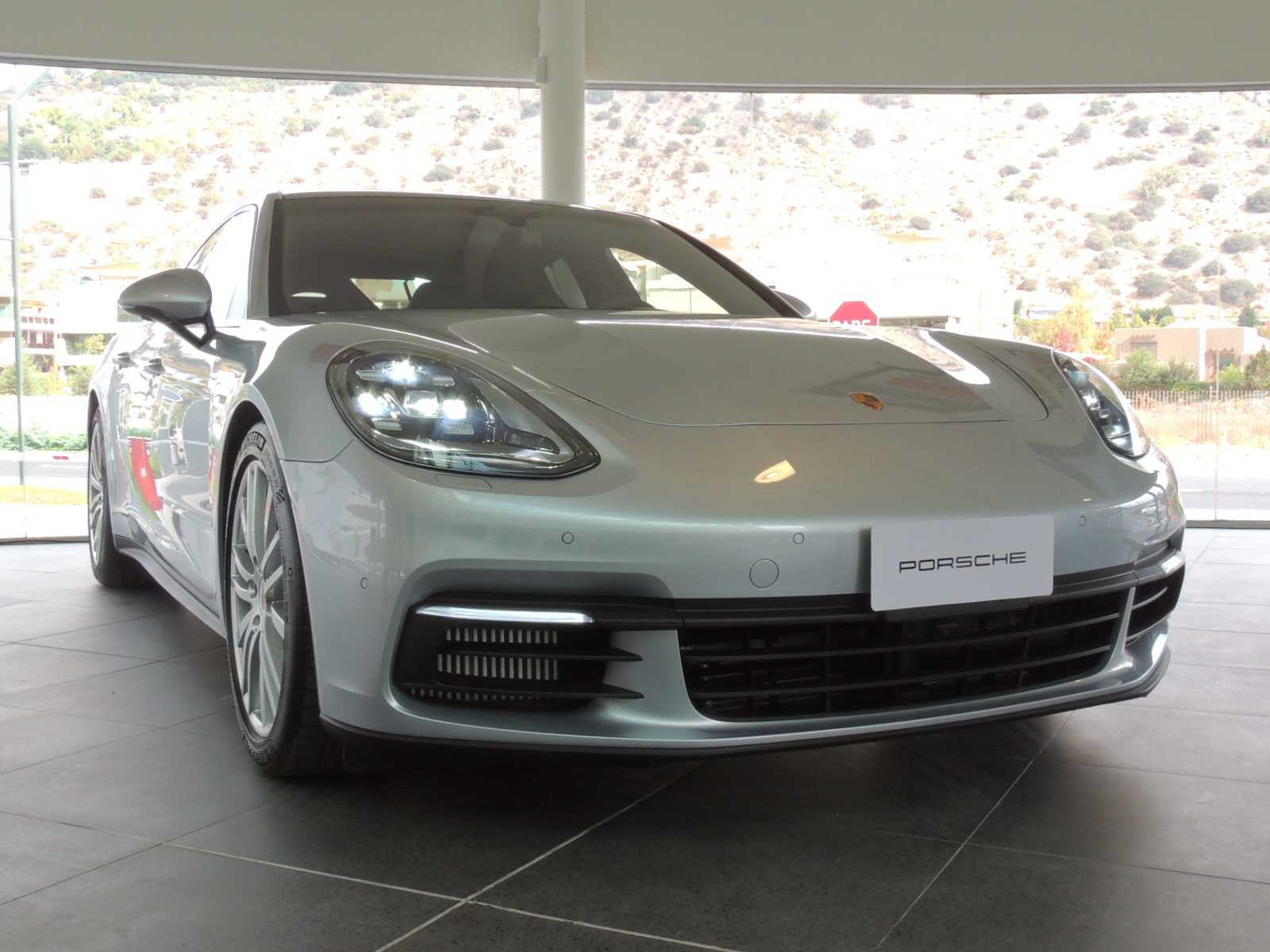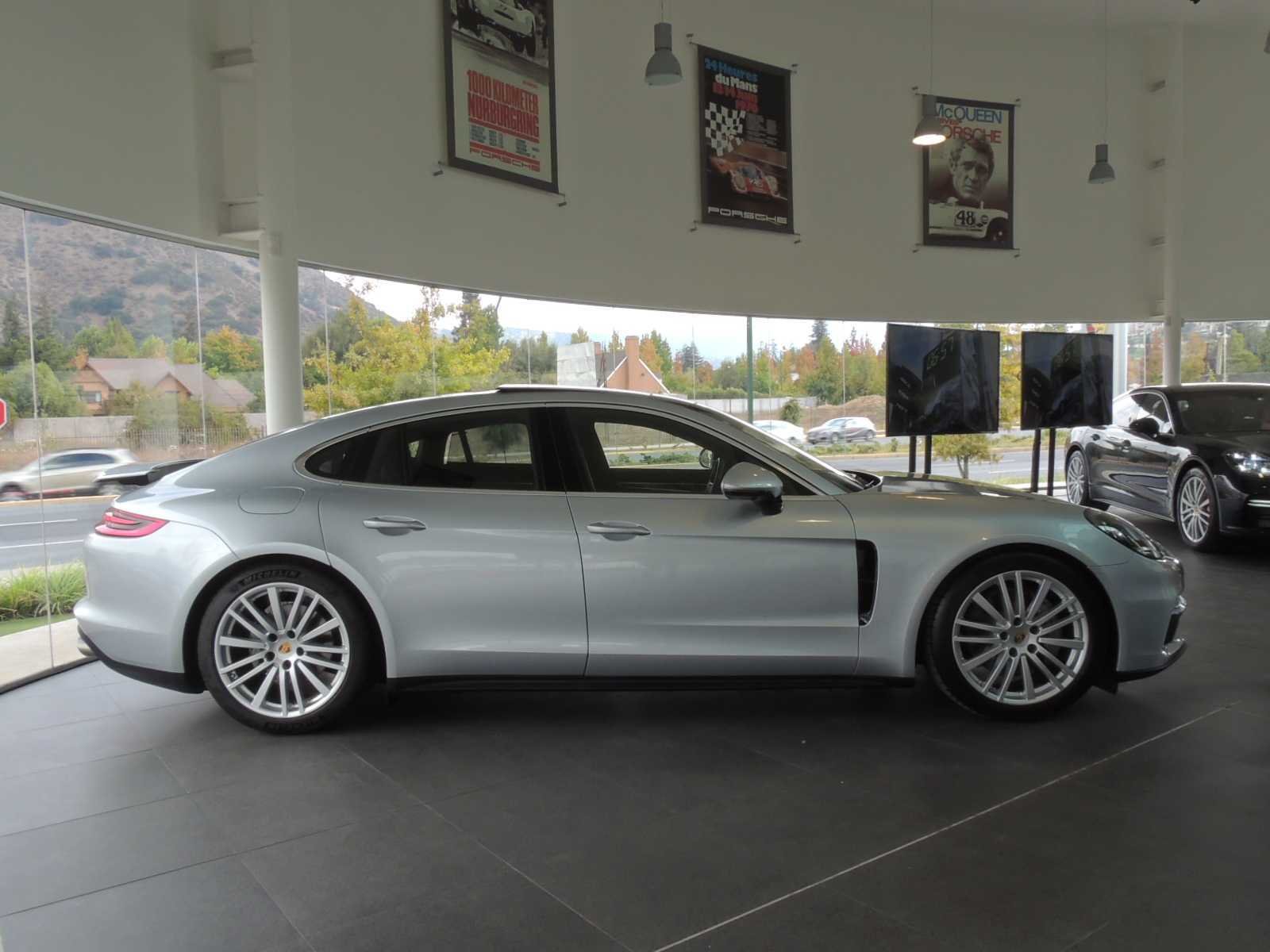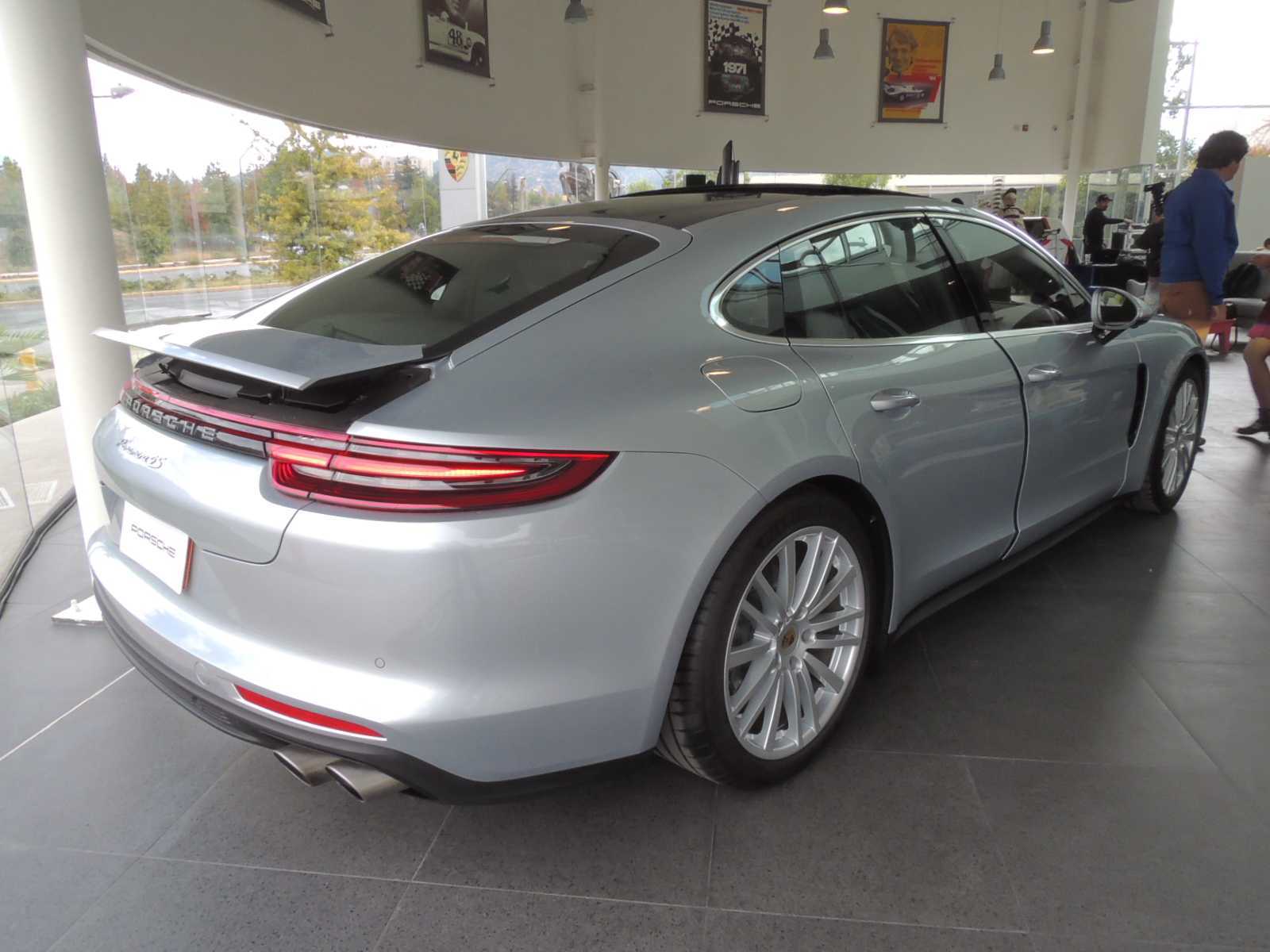Porsche Panamera 2017: Renuevan al deportivo gran turismo
Ditec, representante oficial de Porsche en nuestro país, presentó el viernes recién pasado la segunda generación de su Gran Turismo Panamera. Estamos en presencia de una berlina de lujo evolucionada hasta el último detalle. De hecho se optimizaron sus motores y transmisiones, se perfeccionó su chasis y se han reinterpretaron sus pantallas y elementos de control.
Inicialmente, se comercializarán sólo dos variantes: Panamera 4S y Panamera Turbo. Proyectan comercializar del orden de las 25 unidades anuales.
LÍNEAS EXTERNAS PULIDAS
Al verlo desde cualquier ángulo, se reconoce inmediatamente como un Panamera, pero si lo observamos de costado, vemos que sus líneas hacen un guiño al emblemático 911. Conserva sus largas proporciones dinámicas, hombros pronunciados y flancos atléticos, sumados a líneas que comunican la sensación de velocidad.
El nuevo Panamera tiene 5.049 milímetros (+34 mm) de largo, 1.937 mm (+6 mm) de ancho y 1.423 mm (+5 mm) de alto. A pesar del ligero incremento de altura, este coche de cuatro puertas parece mucho más bajo y más largo. Esto se debe principalmente a la reducción de altura en la zona de los pasajeros de atrás (se reduce 20 mm), mientras que se mantiene una buena habitabilidad. Así se cambia completamente la imagen global del vehículo. La distancia entre ejes ha aumentado en 30 milímetros, hasta los 2.950 mm. Con ello se alargan también las proporciones del coche. Las ruedas delanteras se desplazan hacia delante, lo que reduce el voladizo delantero y hace que la dimensión de prestigio (la distancia entre el pilar A y el eje frontal) sea aún más grande.
El nuevo lateral de la carrocería, igual que el capó, el portón trasero, el techo y las aletas, está hecho completamente de aluminio y acentúa más que nunca la silueta deportiva, gracias a esa línea de techo tan dinámica. Detrás, dicha línea de techo adopta la carismática forma típica de Porsche que distingue a todos los coupés de la marca.
El hecho de que el Panamera sea un coupé de cuatro puertas y no un sedán convencional es más evidente desde atrás que desde ninguna otra perspectiva. El espacio acristalado (formado por el techo, los pilares y las superficies de las ventanillas) se apoya sobre unos hombros amplios y potentes.
Los componentes que mejor identifican la trasera de la carrocería son, sin duda, los pilotos LED tridimensionales, con los cuatro puntos de luz de freno integrados. Los pilotos posteriores están interconectados por una estrecha franja LED. Todos estos elementos juntos crean un diseño nocturno inconfundible. El spoiler trasero extensible, ahora acabado en el color de la carrocería, se integra de forma elegante con el portón del maletero, que tiene la apertura y el cierre eléctricos de serie. En el Panamera Turbo, el alerón también se desdobla cuando se extiende, con lo que gana una superficie adicional.
DISEÑO INTERIOR COMPLETAMENTE NUEVO
La digitalización del interior Porsche, que comenzó con el 918 Spyder, ha alcanzado la siguiente etapa de desarrollo con el Panamera y se le da el nombre de Porsche Advanced Cockpit. Al abordar cualquiera de las plazas delanteras con postura baja, típica de los deportivos, vemos las aletas del auto y la cúpula del capó, y desde el puesto de manejo s dos pantallas de 7 pulgadas, que están situadas directamente en la línea de visión para una ergonomía ideal. Conserva el tacómetro analógico como un homenaje al Porsche 356 A de 1955.
La zona de la consola central presenta una enorme pantalla central táctil de 12,3″, que alberga el Porsche Communication System (PCM) de segunda generación, la que puede ser operada de manera independiente por el conductor y copiloto. Luego vemos una impecable transición hacia el panel negro de la consola central, donde está el selector de la palanca de cambios. Además reune una serie de comandos de control sensibles al tacto (hay que presionarlos ligeramente para activarlos o no).
--------------------------------------
Initially, only two variants will be marketed: Panamera 4S and Panamera Turbo. They plan to market in the order of 25 units per year.
PULIDE EXTERNAL LINES
When viewed from any angle, it is immediately recognized as a Panamera, but if we look at it from the side, we see that its lines wink at the emblematic 911. It retains its long dynamic proportions, steep shoulders and athletic flanks, added to lines that communicate the sensation Of speed.
The new Panamera is 5,049 millimeters (+34 mm) long, 1,937 mm (+6 mm) wide and 1,423 mm (+5 mm) high. Despite the slight increase in height, this four-door car looks much shorter and longer. This is mainly due to the reduction of height in the rear passenger area (20 mm is reduced), while maintaining a good habitability. This completely changes the overall image of the vehicle. The wheelbase has increased by 30 millimeters, to 2,950 mm. This also lengthens the proportions of the car. The front wheels move forward, which reduces the front overhang and makes the prestige dimension (the distance between the A-pillar and the front axle) even larger.
The new side of the body, just like the hood, the tailgate, the roof and the fins, is made entirely of aluminum and accentuates more than ever the sports silhouette, thanks to that dynamic roof line. Behind, this roof line adopts the charismatic typical form of Porsche that distinguishes all the coupés of the mark.
The fact that the Panamera is a four-door coupe and not a conventional sedan is more evident from the back than from any other perspective. The glazed space (formed by the roof, pillars and window surfaces) rests on broad and powerful shoulders.
The components that best identify the rear of the body are undoubtedly the three-dimensional LED drivers, with the four brake light points integrated. The rear lights are interconnected by a narrow LED strip. All these elements together create an unmistakable night design. The extensible rear spoiler, now finished in the color of the body, is elegantly integrated with the tailgate, which has the electric opening and closing as standard. In the Panamera Turbo, the spoiler also unfolds when extended, thus gaining additional surface.
INTERIOR DESIGN COMPLETELY NEW
Digitizing the Porsche interior, which began with the 918 Spyder, has reached the next stage of development with the Panamera and is given the name Porsche Advanced Cockpit. When you tackle any of the front seats with a low stance, typical of sports cars, we see the car's fins and hood dome, and from the driver's seat are two 7-inch screens, which are located directly in the line of sight for An ideal ergonomics. Preserves the analogue tachometer as a tribute to the Porsche 356 A of 1955.
The center console area features a large 12.3 "central touch screen, which houses the second-generation Porsche Communication System (PCM), which can be operated independently by the driver and co-driver. Then we see a flawless transition to the black panel of the center console, where the shift lever selector is. It also brings together a series of touch control commands (you have to press them lightly to activate them or not).





No comments:
Post a Comment